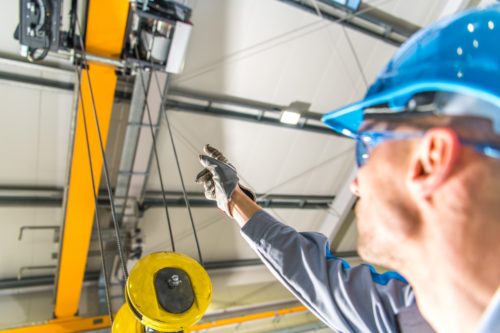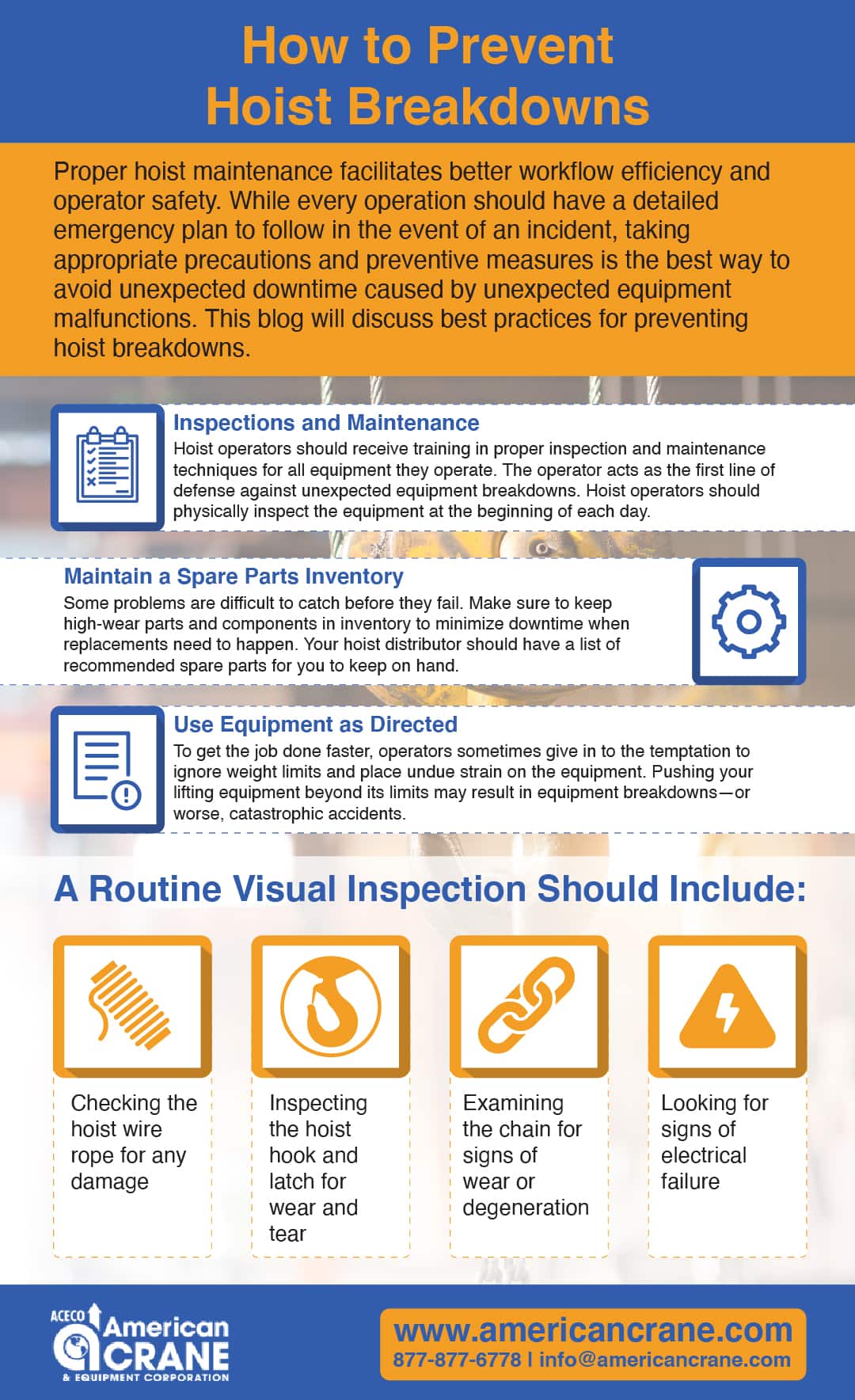Proper hoist maintenance facilitates better workflow efficiency and operator safety. While every operation should have a detailed emergency plan to follow in the event of an incident, taking appropriate precautions and preventive measures is the best way to avoid unexpected downtime caused by unexpected equipment malfunctions. This blog will discuss best practices for preventing hoist breakdowns.
Inspections and Maintenance
 Beyond actual equipment operation, hoist operators should receive training in proper inspection and maintenance techniques for all equipment they operate. The operator acts as the first line of defense against unexpected equipment breakdowns. Hoist operators should physically inspect the equipment at the beginning of each day.
Beyond actual equipment operation, hoist operators should receive training in proper inspection and maintenance techniques for all equipment they operate. The operator acts as the first line of defense against unexpected equipment breakdowns. Hoist operators should physically inspect the equipment at the beginning of each day.
A routine visual inspection should include:
- Checking the hoist wire rope for any damage
- Inspecting the hoist hook and latch for wear and tear
- Examining the chain for signs of wear or degeneration
- Looking for signs of electrical failure
Daily inspections and regular maintenance will help to identify potential issues before they turn into more extensive problems. Daily checks provide an added layer of hoist troubleshooting beyond monthly or annual inspection periods.
Beyond these daily checks, you should also schedule routine inspections from a trained professional. A more comprehensive monthly walkthrough and thorough annual inspections will keep your lifting equipment operational and avoid costly OSHA violations.
Maintain a Spare Parts Inventory
 While preventative maintenance is essential, some problems are difficult to catch before they fail. Make sure to keep high-wear parts and components in inventory to minimize downtime when replacements need to happen. Your hoist distributor should have a list of recommended spare parts for you to keep on hand, but a general list of commonly replaced parts may include:
While preventative maintenance is essential, some problems are difficult to catch before they fail. Make sure to keep high-wear parts and components in inventory to minimize downtime when replacements need to happen. Your hoist distributor should have a list of recommended spare parts for you to keep on hand, but a general list of commonly replaced parts may include:
- Motor and control fuses
- Trolley contactors
- Transformers
- Hoist safety latches
- Push-button stations
Keeping these and other critical parts on hand allows you to fix your equipment right away. Failing to hold common parts in inventory at your facility can extend your hoist downtime by hours or days as you wait for shipments from your supplier.
As the old adage goes, you would rather have the parts and not need them than need the parts and not have them. Ultimately, maintaining your own parts inventory will grant you peace of mind knowing that potential equipment downtime will be minimal. You can check out our available inventory of replacement parts in our catalog.
Use Equipment as Directed
Many hoist breakdowns result from pushing the equipment beyond its capabilities. To get the job done faster, operators sometimes give in to the temptation to ignore weight limits and place undue strain on the equipment. Pushing your lifting equipment beyond its limits may result in equipment breakdowns—or worse, catastrophic accidents.
Emphasis should be placed on operators and supervisors to follow safety requirements. Operators must have all relevant training and certifications regarding their specific hoist equipment, so they understand its limitations. Additionally, operators must remain aware of their surroundings and follow proper protocols to ensure their own safety and the safety of the surrounding personnel.
About American Crane
American Crane is a leading manufacturer and distributor of heavy-lift material handling solutions. We offer hoist solutions for a wide array of industries and applications, and we ship replacement parts quickly to get your cranes and hoists up and running after a breakdown. We can also provide regular OSHA-compliant inspections for your lifting equipment.
To see how our team can help improve the safety and longevity of your hoists and cranes, please contact us or request a quote today.


